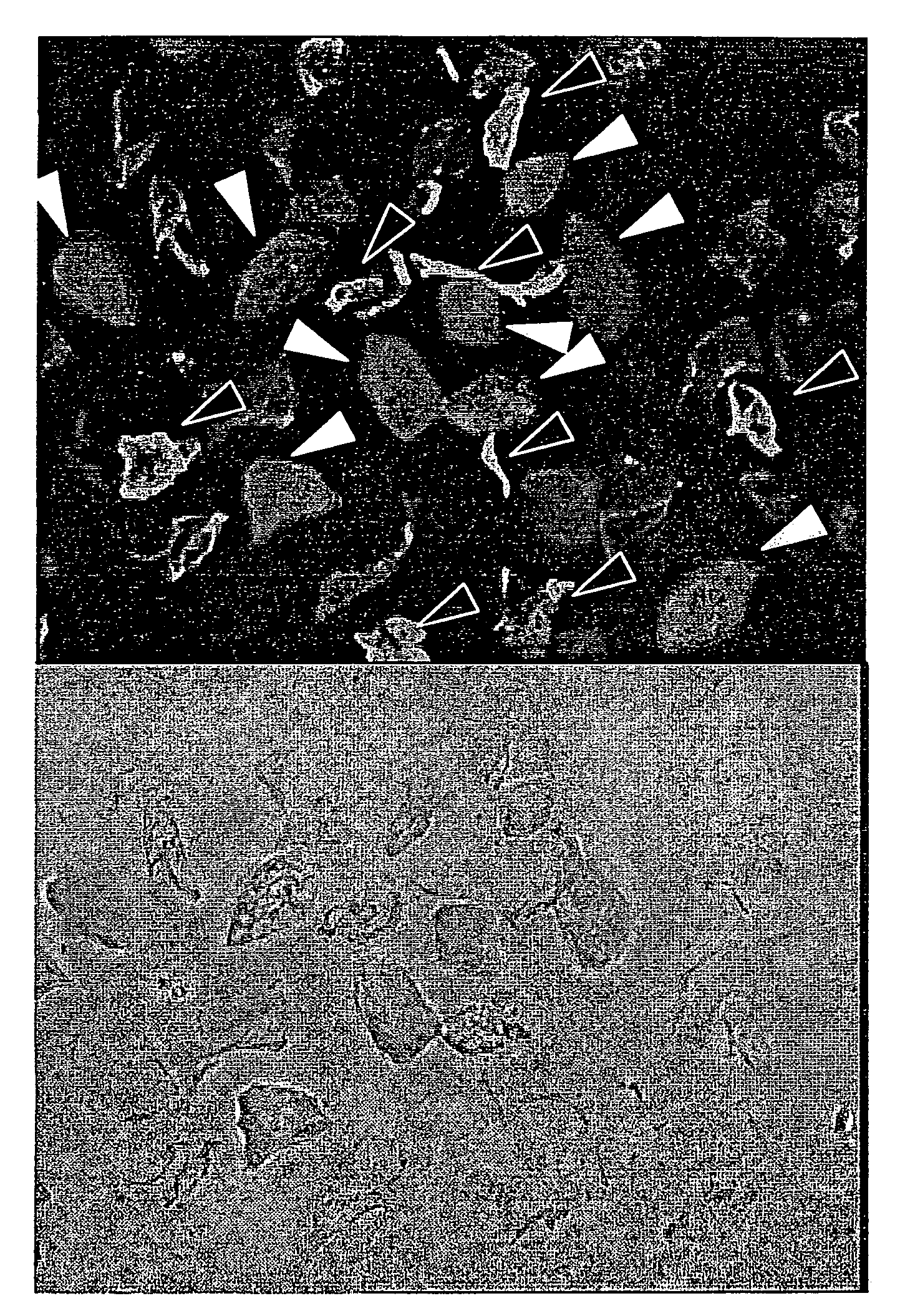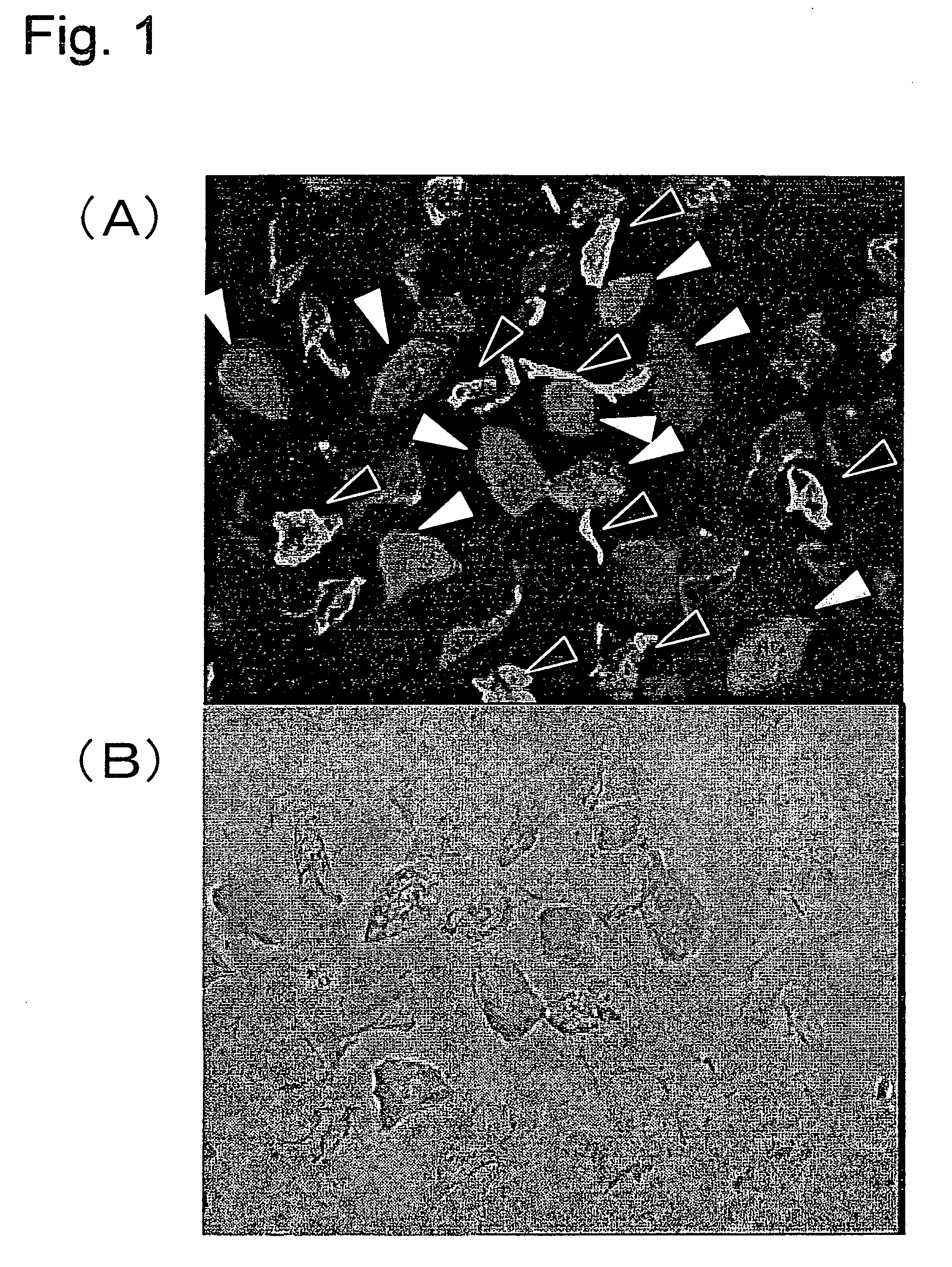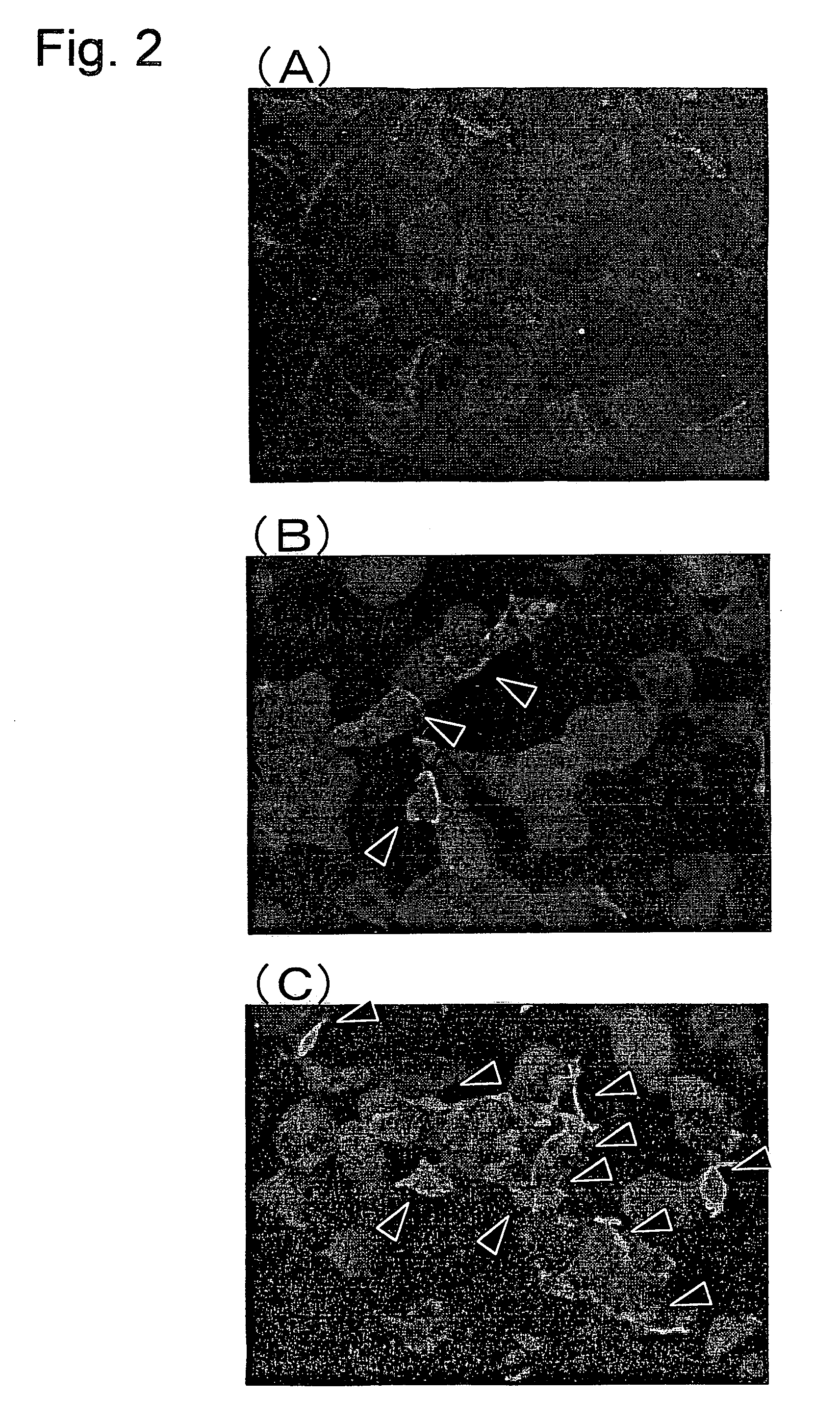Method for evaluating the degree of maturity of corneocytes
- Summary
- Abstract
- Description
- Claims
- Application Information
AI Technical Summary
Benefits of technology
Problems solved by technology
Method used
Image
Examples
example 1
Evaluation of a Horny Layer Sample Obtained Directly from the Skin
[0037]A cellophane adhesive tape was adhered on a face (cheek) and an upper arm of an examinee having skin troubles such as rough skin and immediately peeled off. A Tris-hydrochloric acid buffer solution containing dithiothreitol and sodium dodecylsulfate (SDS) was added to the horny layer adhered to the tape, and the mixture was heated at 100° C. for 10 minutes. Insoluble substances were obtained by centrifugation of 4000×g for 10 minutes. Further, adding and heating of the effluent were repeated three times to thoroughly remove the soluble components. The insoluble substances thus obtained was CE.
[0038]Respective CE's in horny layer samples originating in the upper arm inside (non-processed group) of the examinee which was prepared by the method described above, an SDS-induced rough skin group and a tape stripping-induced rough skin group each were dropped on a slide glass, dried by air and then fixed in cold aceton...
example 2
Evaluation of Cultured Epidermal Keratinocytes
[0042]A human epidermal keratinocytes were cultured according to a Rheinwald & Green method (Cell: 6: 331-334, 1975). It was cultured in a growth medium (DMEM-Ham's sF 12 (3:1) containing 10% fetal calf serum, hydrocortisone 0.5 μg / ml, insulin 5 μg / ml, cholera toxin 10−10 M, epidermal growth factor 10 ng / ml and adenine 1.8×10−4 M) and reached confluent, and then the medium was substituted with a culture medium (MEM containing 0.1% bovine serum albumin) containing oleic acid or linoleic acid which is known to urge the differentiation of keratinocite to accelerate the formation of a barrier (Hanley et al., Journal of Clinical Investigation 100: 705-712, 1997 and Komuves et al., Journal of Investigative Dermatology 111: 429-433, 1998). Further, culture was continued for one week. After finishing the culture, a Tris-hydrochloric acid buffer solution containing dithiothreitol and sodium dodecylsulfate (SDS) was added thereto, and the mixture ...
example 3
Detection of Nuclear Component in Corneocyte
[0043]The corneocyte was dispersed from the horny layer sample according to the method of Takahashi et al. (described above). That is, a cellophane adhesive tape was adhered on the skin of a part to be examined and immediately peeled off. A sodium dodecylsulfate (SDS)-dodecyldimethylamine oxide (C12DMAO) mixed solution was added to the horny layer adhered to the tape and heated at 50° C. for 24 hours. The dispersed corneocytes were obtained by centrifugation of 4000×g for 10 minutes. Further, they were washed three times repeatedly with the SDS-C12DMAO mixed solution to thoroughly remove the soluble components to thereby prepare the corneocytes.
[0044]The corneocytes prepared by the method described above were dropped on a slide glass, dried by air and then fixed in cold acetone. They were hydrated in a Dulbecco's phosphate buffered saline and then reacted with a mouse anti-involucrin antibody (NOVOCASTRA Co., Ltd.) used as a primary antibo...
PUM
 Login to View More
Login to View More Abstract
Description
Claims
Application Information
 Login to View More
Login to View More - R&D
- Intellectual Property
- Life Sciences
- Materials
- Tech Scout
- Unparalleled Data Quality
- Higher Quality Content
- 60% Fewer Hallucinations
Browse by: Latest US Patents, China's latest patents, Technical Efficacy Thesaurus, Application Domain, Technology Topic, Popular Technical Reports.
© 2025 PatSnap. All rights reserved.Legal|Privacy policy|Modern Slavery Act Transparency Statement|Sitemap|About US| Contact US: help@patsnap.com



